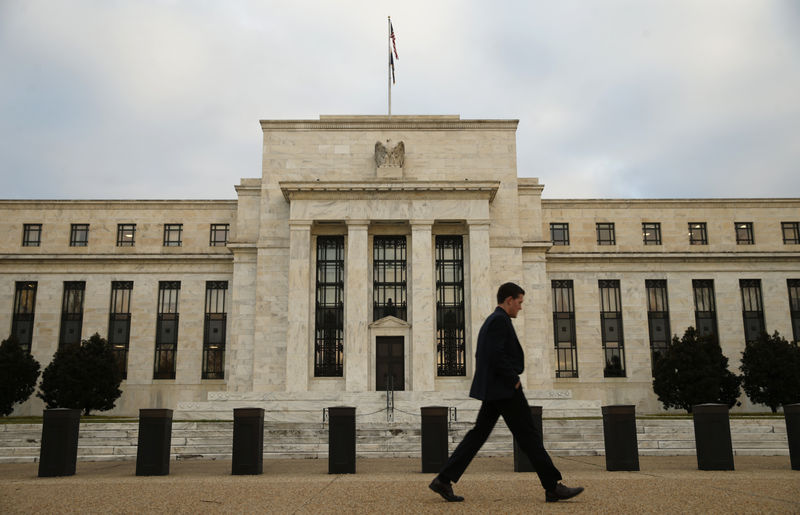By Yasin Ebrahim
Investing.com - The Federal Reserve kept interest rates near zero Wednesday, but said it would step up the tapering of bond purchases and signaled up to three rate hikes next year to curb elevated inflation.
The committee said it would increase the taper of its bond purchases by $30 billion a month in January, double the $15 billion monthly pace announced in November.
The Fed flagged "inflation developments and the further improvement in the labor market," as factors that led to the central bank's decision to speed up the pace of bond tapering.
The aggressive tweak on the taper was largely expected after Fed Chairman Jerome Powell recently flagged concern about inflation and conceded that it was “good time to retire that word [transitory].”
The Personal Consumption Expenditures price index, the Fed’s preferred inflation measure, was up 0.6% in October, pushing the rate for the 12 months through October to 5%, well above the Fed’s 2% target.
The Fed's pivot on inflation has some worried the central bank could be forced to tighten policy more aggressively just as the economy is expected to slow in 2022.
The Federal Open Market Committee left its benchmark rate unchanged in the range of 0% to 0.25%.
The faster pace of tapering points to the bond purchasing program ending in March, paving the way for rate hikes to get underway in the spring of 2022.
The Fed is now projecting its benchmark rate to rise to 0.9% in 2022, suggesting two-and-a-half rate hikes next year, the Fed’s Summary of Economic Projections showed. That represents a sharp contrast from prior expectations when members were equally split on whether to lift rates once in either late 2022 or early 2023.
For 2023, the Fed sees the Federal funds rate at 1.6%, up from its prior projection of 1.0%, pointing to three hikes.
The Fed will continue to hike until reaching its terminal rate for Fed funds – the rate that is consistent with full employment and stable inflation – of 2.5%.
Some question, however, whether the central bank will be able to reach this rate amid fears about a slowing economic growth.
The economy is expected to grow by 5.5% in 2021, down from previous estimates of 5.9%, while the forecast for 3.8% growth in 2022 was revised higher to 4%. For 2023, the Fed sees growth of 2.2%, down from its prior forecast of 2.5%.
The pace of inflation is forecast to speed up to 5.3% in 2021, and 2.6% in 2022, compared with prior estimates of 4.2% and 2.2%, respectively. Inflation expectations for 2023 were increased to 3.5% from 2.3%, and raised to 3.5% from 2.1% for 2024.
Ahead of the meeting, some questioned whether the Fed was behind the curve on inflation and would have to respond by tightening policy more aggressively than expected. While acknowledging that the risk of persistent inflation had increased, Powell said that the updated policy measures and expectations for inflation to slow in the coming years likely mitigated that risk.
"I believe that inflation may be more persistent and the risk of higher inflation becoming entrenched has increased," Powell said in the press conference that followed the Fed's monetary policy statement. "That's part of the reason behind our move today is to put ourselves in a position to be able to deal with that risk [of elevated inflation]."
The labor market, part of Fed's dual mandate, is expected to improve, with the unemployment rate forecast at 4.3% in 2021, down from 4.8% previously. In 2022, further job gains are pencilled in as the unemployment rate was expected to improve to 3.5%, down from 3.8% previously.
